Posture
In posture, the core is the human bone structure. Everything else is based on that. Bad posture can lead
to bad circulation, muscle pain, headaches, breathing issues, organ issues, etc.
A good singers posture may best be approached by finding a foundation built through a neutral position that
exerts the least amount of energy. body positioning that favors the best functioning of all body parts.
Such positioning balances the distribution of weight, putting the least strain in muscle, tendons,
ligaments and bones. Generelly, a singer learns a specific stance, " a go to if all else fails."
This way, if there is any tentition thoughout the body, a singer is able to recall their neutral position
and adjust where the issue is at to relax it. In general, a posture that best fits for a neutrial position is:
Feet forward and Shoulder width apart, balance of body on front balls of feet, bent knees and a balanced
pelvic bone. A forward chest with lowered arms, ears over shoulders and a slight upward tilt of the head.
Breathing
humans use oxygen in the respiratory process. It is used to break down foods for energy
and produces carbon dioxide as a waste product. The body's circulatory system transports these gases to and from the ,
cells, where "cellular respiration" takes place. Under normal conditions the breathing depth and rate is automatically,
and unconsciously, controlled by several homeostatic mechanisms which keep the partial pressures of carbon dioxide and
oxygen in the arterial blood constant. There are three main types of breathing, Clavicular: The raising of the arms,
Intercostal: rib cage expansion and Diaphragmatic: Diaphragm expansion. The first two do not allow enough air in the
body to properly distribute through out. The chest must remain expanded while the diaprahm lowers and raises.
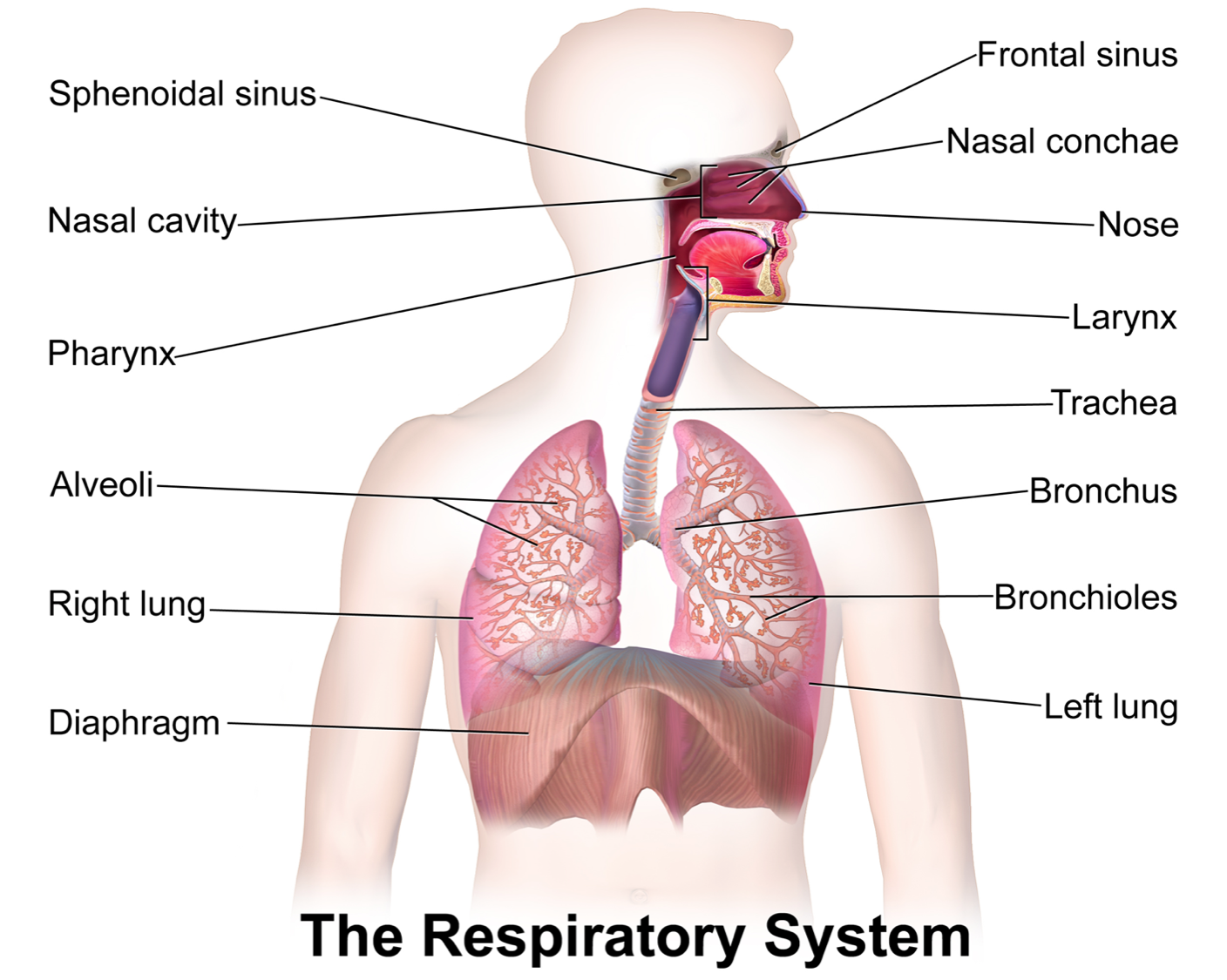
Support
Support is the amount of Vocal intensity that is proportionally based on the note(s) being sung, the length of time of the note(s),
Phrasing, Volume, and the performance room. Too much support is pushing and can cause tension in the vocal track.
using the same amount of support at the beginging of a phrase at the end, is also pushing.
The opisite of this is also true, using the same amount of support at the begining for the end wouldn't
suport the sound needed, including consonants to perform with. The Core of the voice
is the area that composes the diaprahm, abs and all the organs there in. The abs include the Rectus abdominis,
the Transversus abdominis, and a pair of muscles called the obliques. The oblique muscles actually include the
following pair of muscles on each of your sides: The external obliques form the top muscle. other musscles of the
Core include the Sphincter muscles that control the flow of urine, as well as, the Muscles in the rectum and anus
that control or release stool.


Phonation
Phonation happens when enough pressure comes up against the closed vocal folds that they begin to open and close. This pressure allows air particals through
that vibrate at a given frequency of sound called the voice.
The vocal folds, otherwise called the Vocal Chords, are composed of twin infoldings of 3 distinct tissues: The outer layer is a squamous, non-keratinizing epithelium.
Below this is the superficial layer of the lamina propria, a gel like layer, which allows the vocal fold to vibrate and produce
sound. The vocalis muscle make up the deepest portion. These vocal folds are covered with a mucous membrane
and are stretched horizontally, from back to front, across the larynx. The inner lining surface of this squamous epithelium is
covered by a layer of mucus that helps to keep the vocal folds moist and lubricated.
The falsetto voice is created when the vocalis muscle is left out of the phonatory process and not by the false vocal folds.
The higher a singer sings, the less of the vocalis is used. There is also an area between the vocalis and outter
two parts of the vocal folds known as the Passaggio. The Passaggio is also known as the passage and is the
area that most singer's have issues with. A healthy vibrato happens when the muscle's of the larynx are relaxed enough to pulsate and create an even
pulsating voice balance around a centeral point.
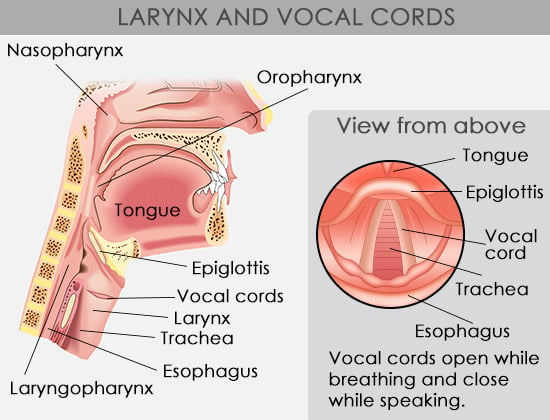

Resonation
Resonation happens when the voice passes through the bodies many chambers and bounce's off the walls in the chambers
before leaving to the next chamber. These chambers are where the bodies natural areas of amplification takes place
and are called resonating chambers. There are two main areas where resonation takes place, the head and chest.
A chamber is an area that has an opening for the voice to enter and a point at which
the voice is obstructed. This obstruction allows the voice to fill the chamber, creating amplification.
Head voice is when more resonation happens in the head and chest voice is when more resonation
happens in the chest. Singers also have a chest plate and a face plate to aid in amplification. More resonation in the chest is best for
lower voiced singers and more in the head for higher voiced singers. Resonation also happens in the Pharynx, Nasal, oral, Sinus cavities,
amoung other places. Some chambers can be trained to create more space for a bigger voice, like an expanded chest with a lowered diaprahm
to create space in the chest cavity. A lowered jaw with a forward tongue as well as a loward larynx with a lifted soft palate helps create
more space in the oral and pharynx cavities. Flaring the nostrils can help the nasil cavity too. It is importand to remember that muscles
can and do sit over singers resonating chambers that can and do affect them.


Vowels
A vowel is a syllabic speech sound that is pronounced without any stricture in
the vocal tract. There are 5 pure vowels that all other vowels are a mix of that
also consist of no dipthongs. These are
Each of these 5 pure vowels are fundamental to a singers mouth position because
a good mouth position establishes a good mouth embouchure that aids a singer with diction.
A good mouth embouchure consists of a forward tongue, lowered jaw, rounded lips. This helps
because the articulators are closer together saving time and effort.
These vowels can be called front or back, open or closed because of what they do to the
the mouth embouchure. The
vowel, as in "see,"
is a closed front vowel because it helps to place the tongue
forward to the front of the mouth but, it can close the jaw and spread the lips horizontally.
The,
and larynx, but it can pull the tongue back. The open
vowel, as in "so" without the dipthong to the closed (O), helps to establish a rounded lip
position which is good for blending with others. The
as in "too," helps to keep the sides of a singers lips more forward to prevent spreading lips and loosing air.
The (u) vowel prevents the natural tentancy to spread the sides of the lips that
caused by the (e) vowel. The
the cheeks and upper lip to allow sound to hit the hard surface of the teeth to
create a brighter sound. Good diction happens when the jaw is lowered, the toungue
is forward, and the lips are more puckered. This happens because the singers
articulators are closer together and don't need to take the time to keep repositioning
for articulation. Another important kind of vowels are called glides. Glides are any musclar
movement in the articulatory process. In particular, the (W) as in we, the (Y) as in you, and
the glottal (H) as in hot.
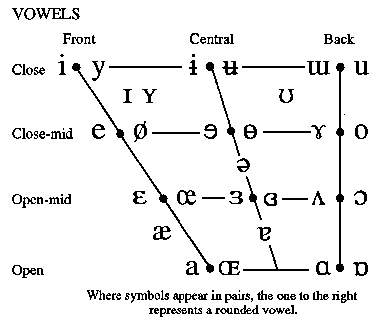
Consonants
A consonant is a speech sound that is articulated with all or partial closure of the vocal tract. There are an array of
consonants a singer has at their disposal to aid us. The Voice Fricitives (v,
the vibrations created. Unvoiced Fricitives (f,s, and
Plosives (p,t, and k) can act like a clapper of a bell to help energize the resonating chambers. The (v) and (f) are produced by the same articulators, the only
difference is one uses the phonation to produce it and the other does not. The (s),(z) consonants are the same respectively. The nasil consonants (m,n, and
activate the resonation in the chambers. The Unvoice plosives, or implosives act like a drum stick of drums. These are (B,d,g) and are very helpful to understand the ratio of support between consonants
and vowels.
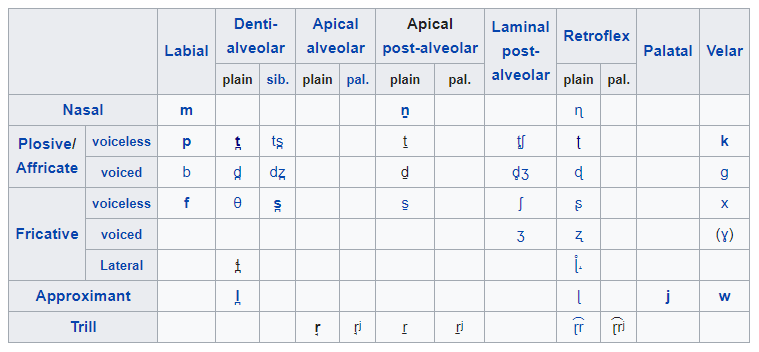
Focus
The focus is the deliberate muscular movements that are focused in an area to produce a sound that
can be well heard and understood. Almost every room has a focal point. A central point that all sound
vibrations are naturally drawn to by the acoustics of the room. This is the point in the room that all
sound returns to after bouncing off the surfaces in the room. A focused voice is like a focused laser beam,
it concentrates the voice to the focal point in the room to create more sound and use less air.
Also, the focusing of the eyes is also important...There is a fine line between "daggar eyes" and the "deer in the headlight eyes."
The Mask is the functional unity of the facial muscles, the Temporalis muscles, and the Occipitalis muscle.
there is a slight lift in these muscles to thin out the muscles over resonating areas. The lift of the Mask combind
with the forward placement of the articulators acts like a pipe from an organ.



OverTones
An overtone is any tone greater than the fundamental frequency of a sound and together are called harmonics.
Harmonic partials, are partials whose frequencies are numerical integer multiples of the fundamental frequency.
The fundamental note being sung in a given room vibrates at a specific Hz causing a secondary vibration.
This secondary vibration is double the Hz of the fundamental frequency creating a tone an octave higher
that is known as the 1st overtone. The vibration from the 1nd over tone creates 2nd overtone that
is the combind hz from the fundamental frequency and 1st overtone of an octave and a
fifth above the fundamental frequency. Each over tone being an addition of the Hz from the tone below it
and the fundamental frequency.

Formants
Formants are close groupings of overtones and are created in
each resonating chamber of the singer that gets amplified with the voice like a bell into a room. A singer
needs to create at least 7 Formants to naturally sing over any size orchestra in any size room.
Lower formants are created in the chest area while higher ones are created in the chambers of the head.
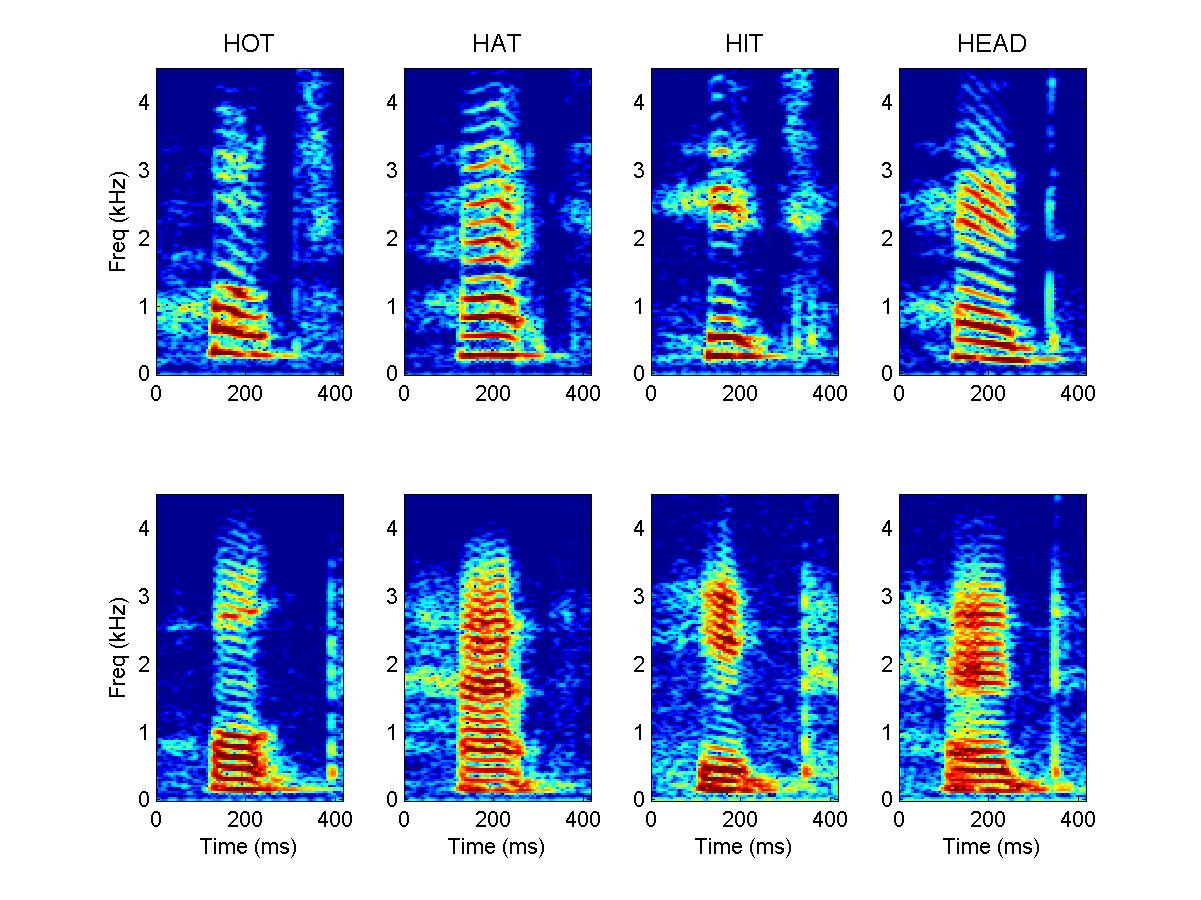
Hydration
Keeping hydrated is extreemly important and not just for singers. Keeping a water bottle by at all times is essential.
Our bodies are about 60% water, the brain and heart are composed of about 73% water, and the lungs are about 83% water.
The skin contains 64% water, muscles and kidneys are 79%, and even the bones are watery: 31%. Water is what circulates
oxygen throughout the body. Singers must be mindful of how much and when to drink water becaue it takes a good 24 hours
for water to hydrate and keep the Vocal folds moist, flexable and ready to sing. Drinking alot of water just before singing
will only aid in filling up the bladder and the need to empty it.
Food
Keeping a healthy food habbit is also extreemly important to everyone. Choosing what food to eat and when to eat it can be hard to
manage, especially for busy life styles. Heavy Foods and anything creamy before singing can be counter productive, because it saps
energy to digest the Heavy foods and anything creamy can coat the Vocal Folds, making it dificult to phonate.
Yoga
Yoga is a great way to stretch and warm up a singers body, remember that our body is our insterment and we must take care of it.
a daily yoga regiment is a must and learning what streatches and breathing components are good to do before vocal warm ups to make sure
the body as a whole is warmed up and ready.
Vocal Warm Ups
Vocal warm ups are just as important as warming up for any athletic venture. There are a couple warm ups that are guaranteed to
pack a good punch for your buck. The first is just a simple hum. Humming assending or desending, as well as a held note to help wake the voice.
The next is called a "Yawn-sigh" and is just a vocal sigh assending and desending on a vowel. sometime's it helps to mix an (H) consistantly throughout to keep
a good blend of glotoral space to air released through. The best starting vowel is the
because it's an open vowel that helps to create space. Changing vowels
and being mindful of what each vowel brings to the table and what each one takes away is an importan factor too. Later, adding a consonant at the begining of each "Yawn-sigh"
can spice it up a bit too.. This is a great opertunity to note how to
incorperate what each vowel brings and throwing out what each one takes away. vocal warm ups also help to shake any gunk on your Vocal
Folds that would interfear in the phonating process. Another really good vocal warm up are trills. Lip and tongue trills are basicly
the mother load of warm ups because they incorperate the "Yawn-sigh warm up and naturally throws in a good blend of support and mix of
air through the Vocal Folds.
Vocal Exercises
Vocal exercises are any exercises designed to improve consistancy through out the range of the voice, as well as, consistancy
through out the line in phrasing of songs. There is a phrase that is important to singers called the Vocal Connection.
This connection is from the nasil area in what's called the "snarl sensation" to the diaprahmatic area as a whole that
acts like an anchor that hooks up into the nasil aria. Every thing in between these two areas are called the vocal tract.
Another important phrase is the Passaggio, otherwise known as the area of passage between the musclur portion and the outter
layers. Most people have at least one area in their range that is dificult to sing through and often times ends up with a singer
cracking their voice. Any staccato exercice helps to strengthen the diaphramatic area to create a firm foundation creating an anchor,
doing it with scales on just vowels first and then adding consonants.
Also, using the friench nasil vowel
Yawn sigh descending from falsetto down to begin mixing the vocalis, it helps to add more of an H when working through this area
to help "lighten" the area enough to blend them together as a smooth functional unity. It doesn't matter what voice type you are,
the Passiggio might be different for a low voice compared to a higher voice, but the physiology is still the same as far as what
the issue is. Learning how to lession the amount of phonation in the vocalis muscle while singing an asending line is very importan,
just like singing a decending phrase to learn how to blend more of the vocalis muscle in the phonatory process. Another vocal ecercise
is holding the (s) consonant for counted beats, each time holding it for a longer beat. This is great to aid in suport and consistancy
thouugh out a phrase in a song. Another really good one is a staccato triplet vocal exercise. Staying on the same tone and producing
the three voiceless fricitives (f,s, and
consonants to do this on is with the Plosives (p,t, and k). It's is important to try to sneak a quick breath in between each staccato sung.
Lastly, just like in any athletic venture, you have to prepare!!! Any staccato scale asending and decending with breaths between each note
helps to train and strengthen breathing and prevents a singer from trying to force the voice to do something it's not ready for.
It is important for a singer to warm up and vocalize for an hour each day.
This does not include the time a singer needs to put in to learn their music!!!
common metaphors, intangable concepts, terms and phrases. "biting into an apple" is the when the upper lip shoes more teeth by lifting the upper lip
"The Mask" is the lifted placement of the facial mussles excluding the articulating muscles.
I have found that life is more bearable when one has some sort of spititual connection.
The who, what, when, where, and Why is up to you. Some find that just meditation works for them,
as for me, I find that my connection is with the LDS church and that works for me. My wish
for anyone is to have light, love, and happieness. Peace be with you.
Yours truly,
Tim

Church of Jesus Christ of Latter day saints

The centers for Spiritual Living.

